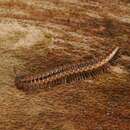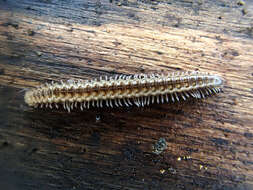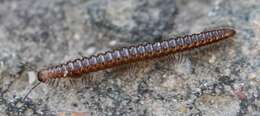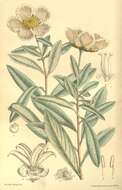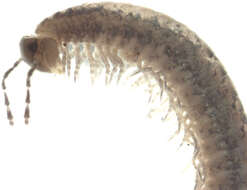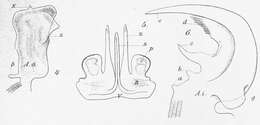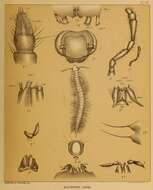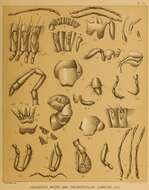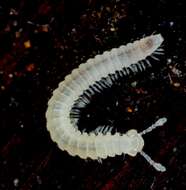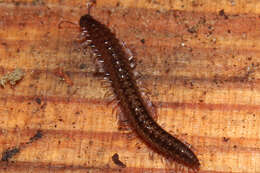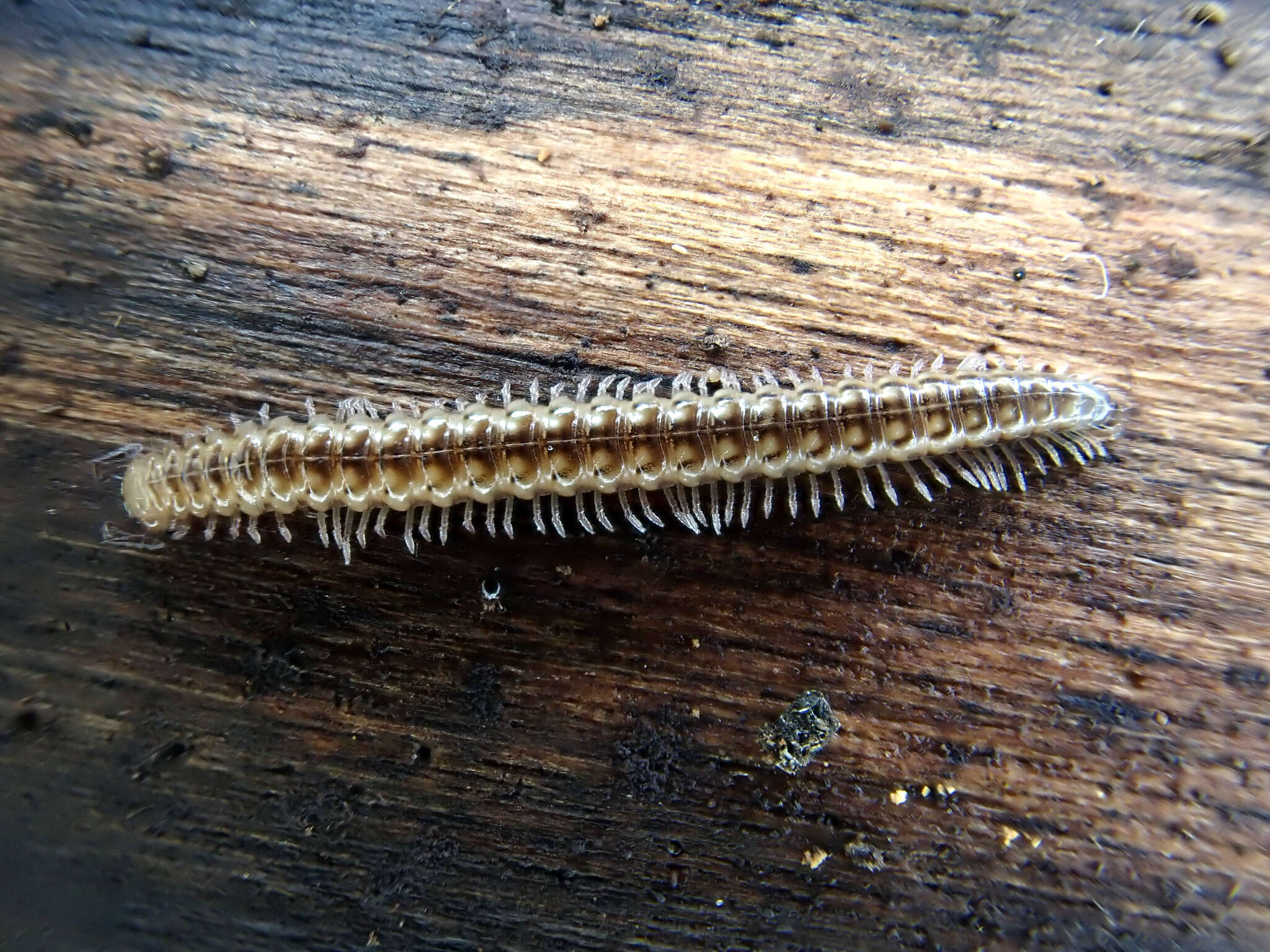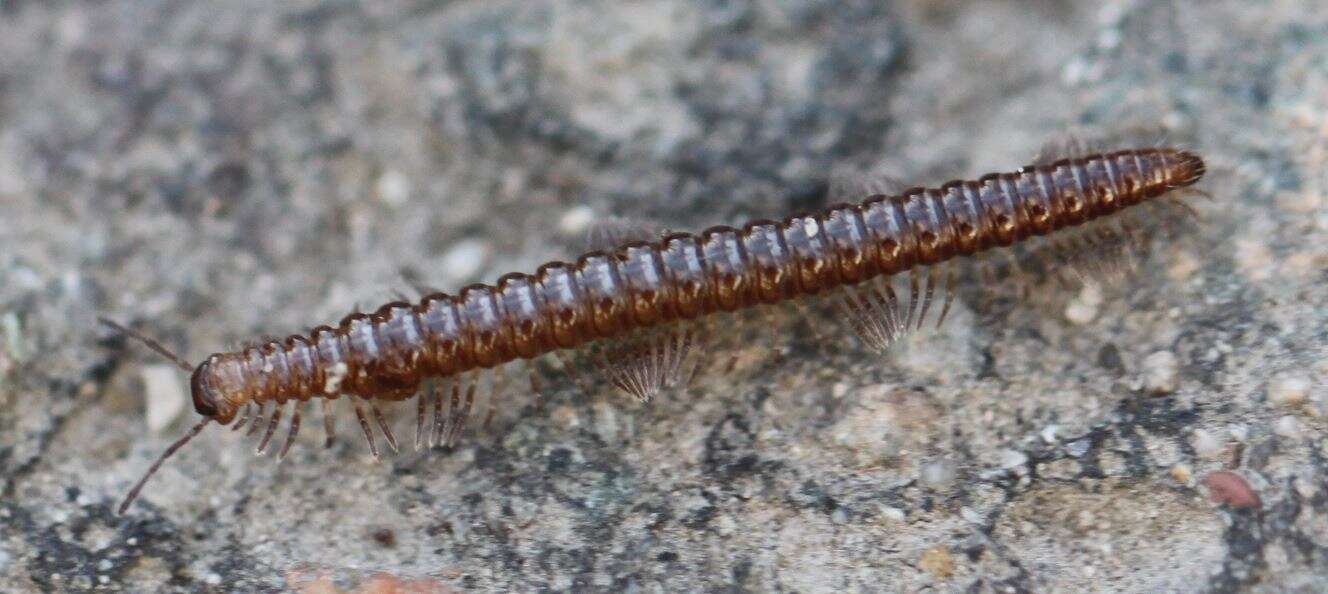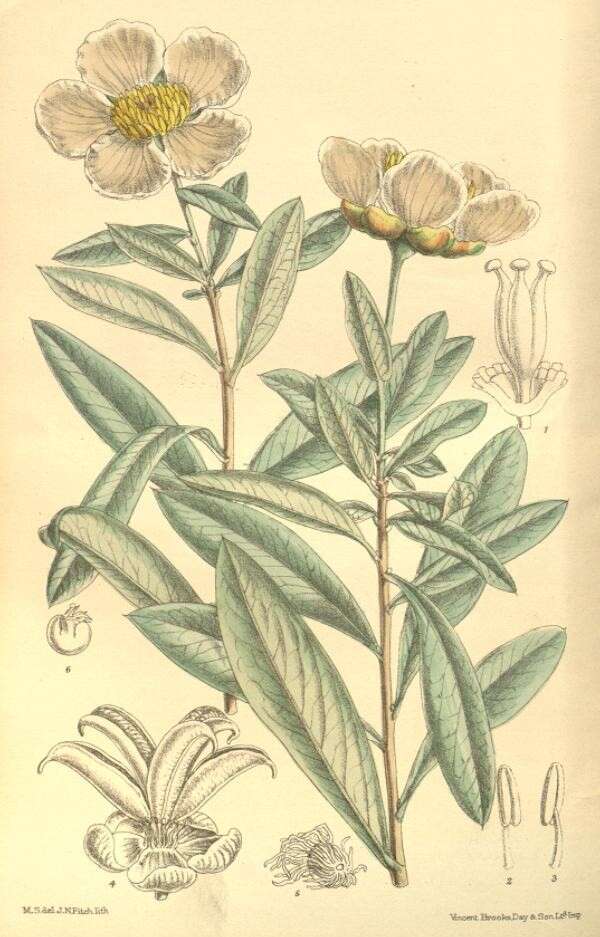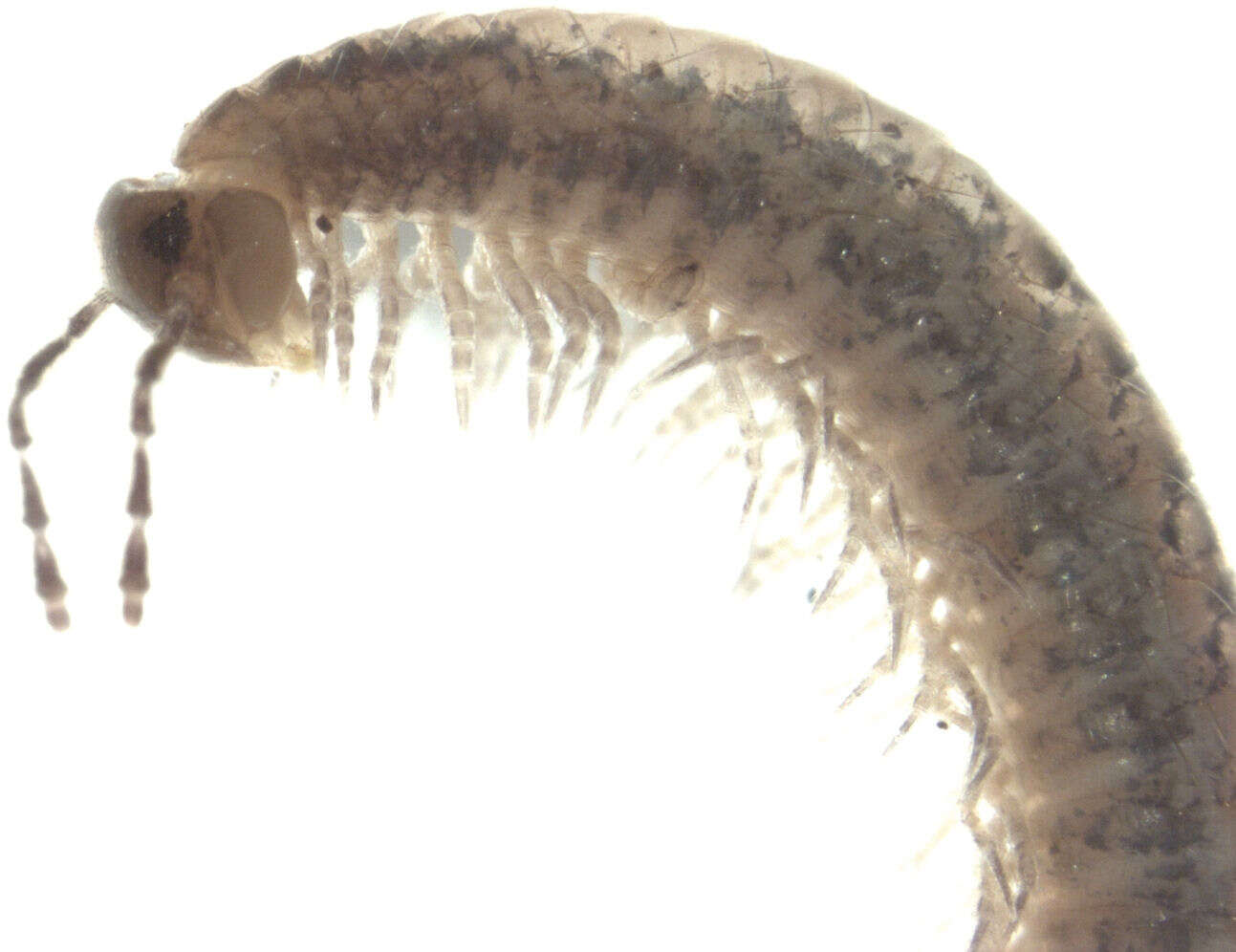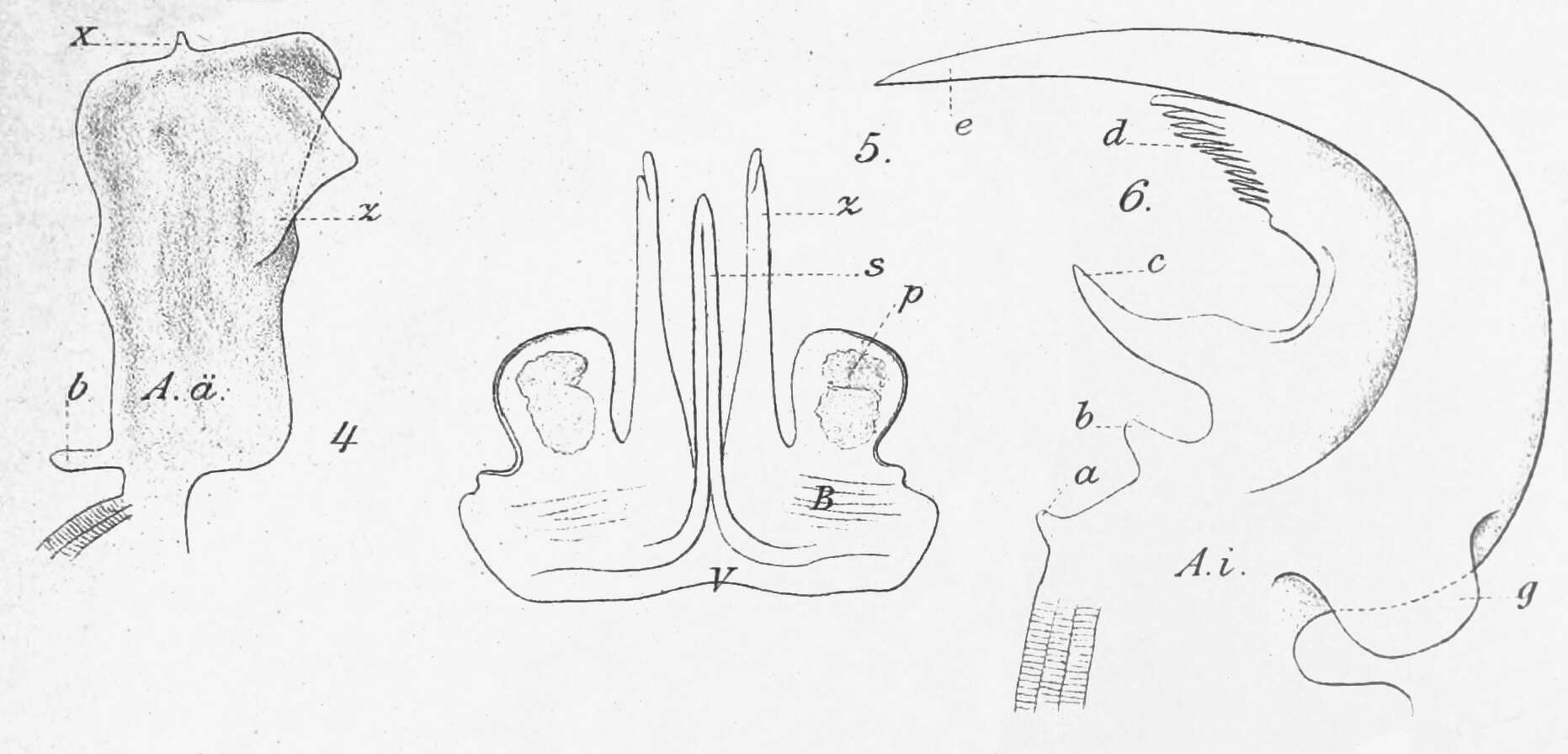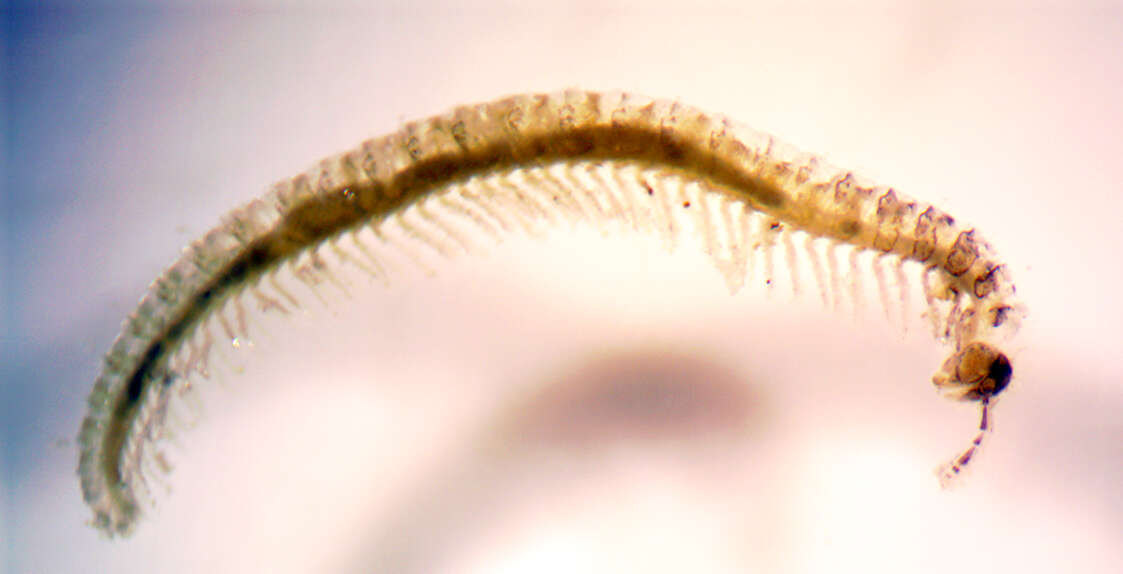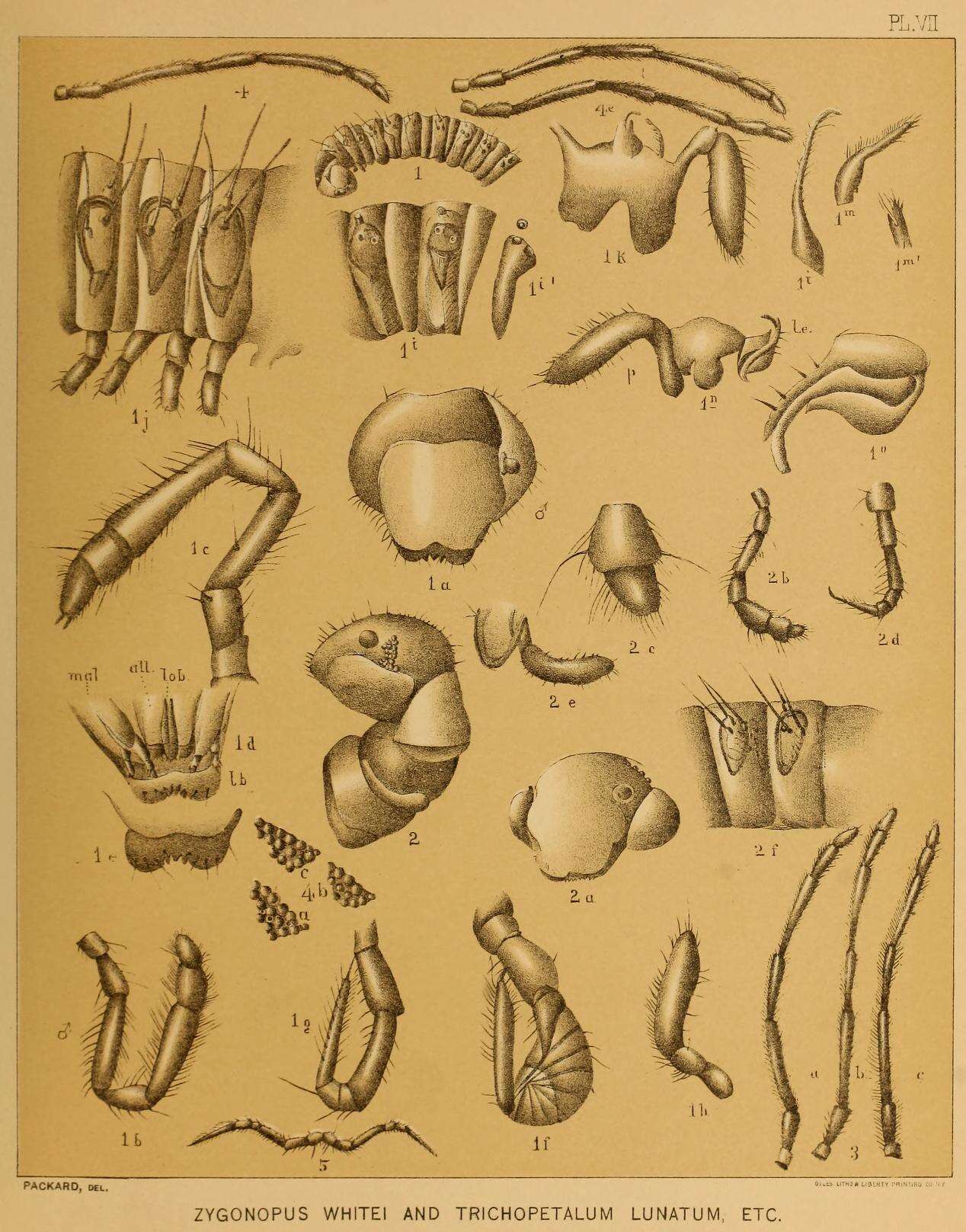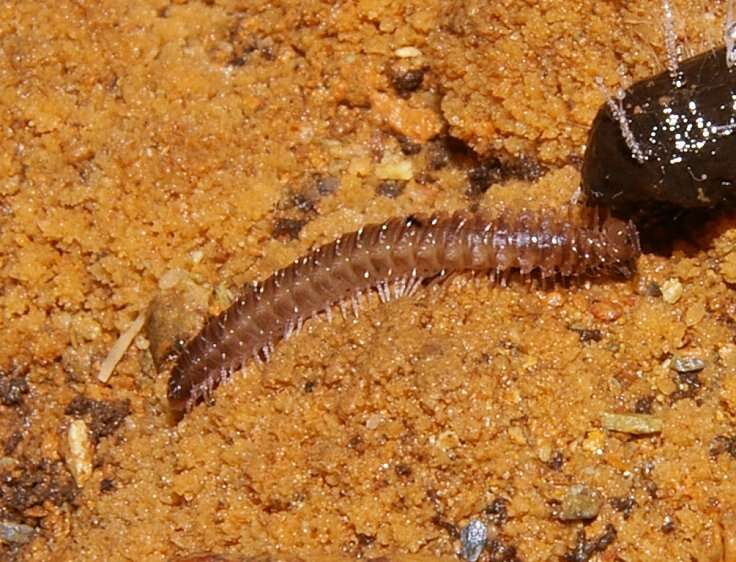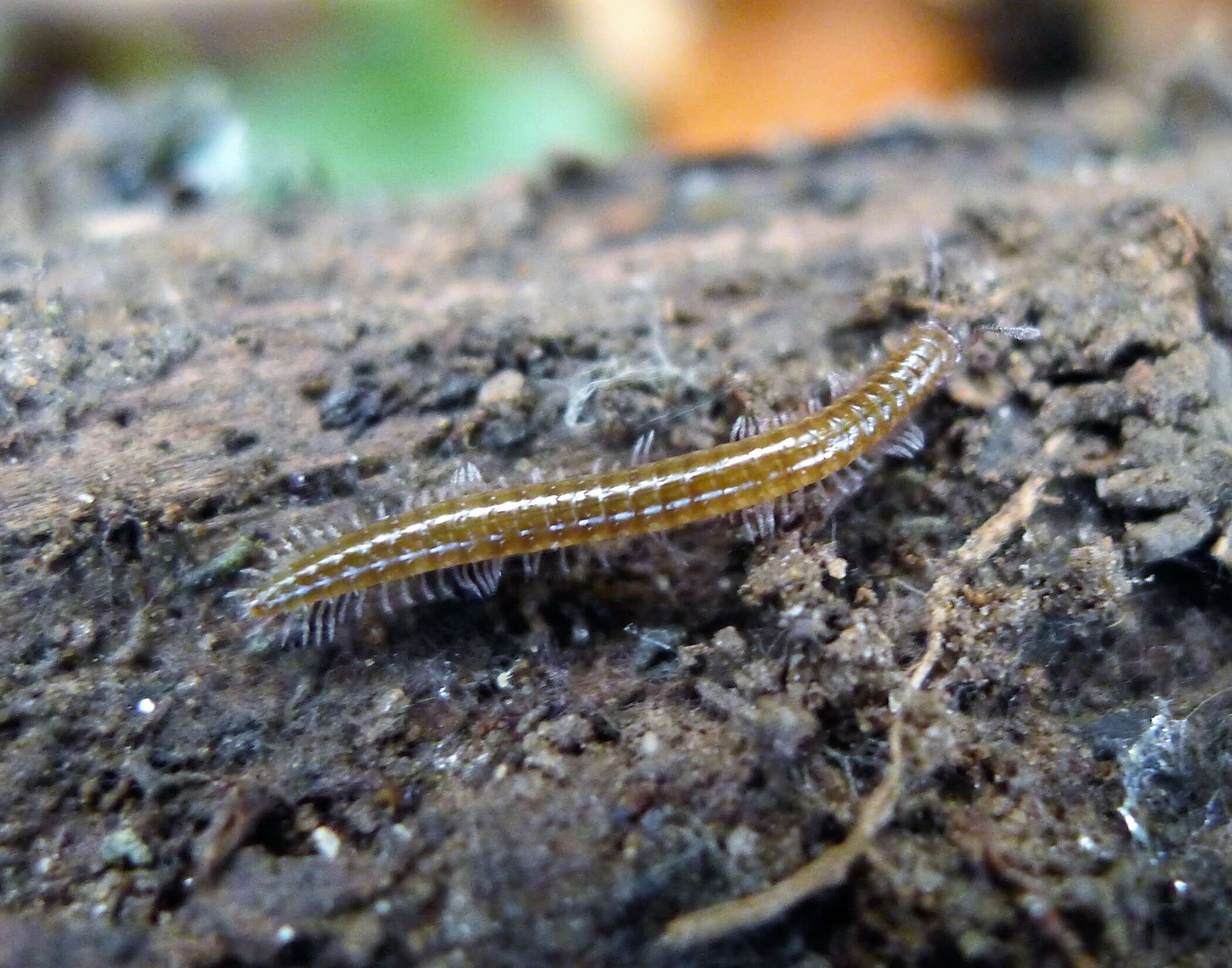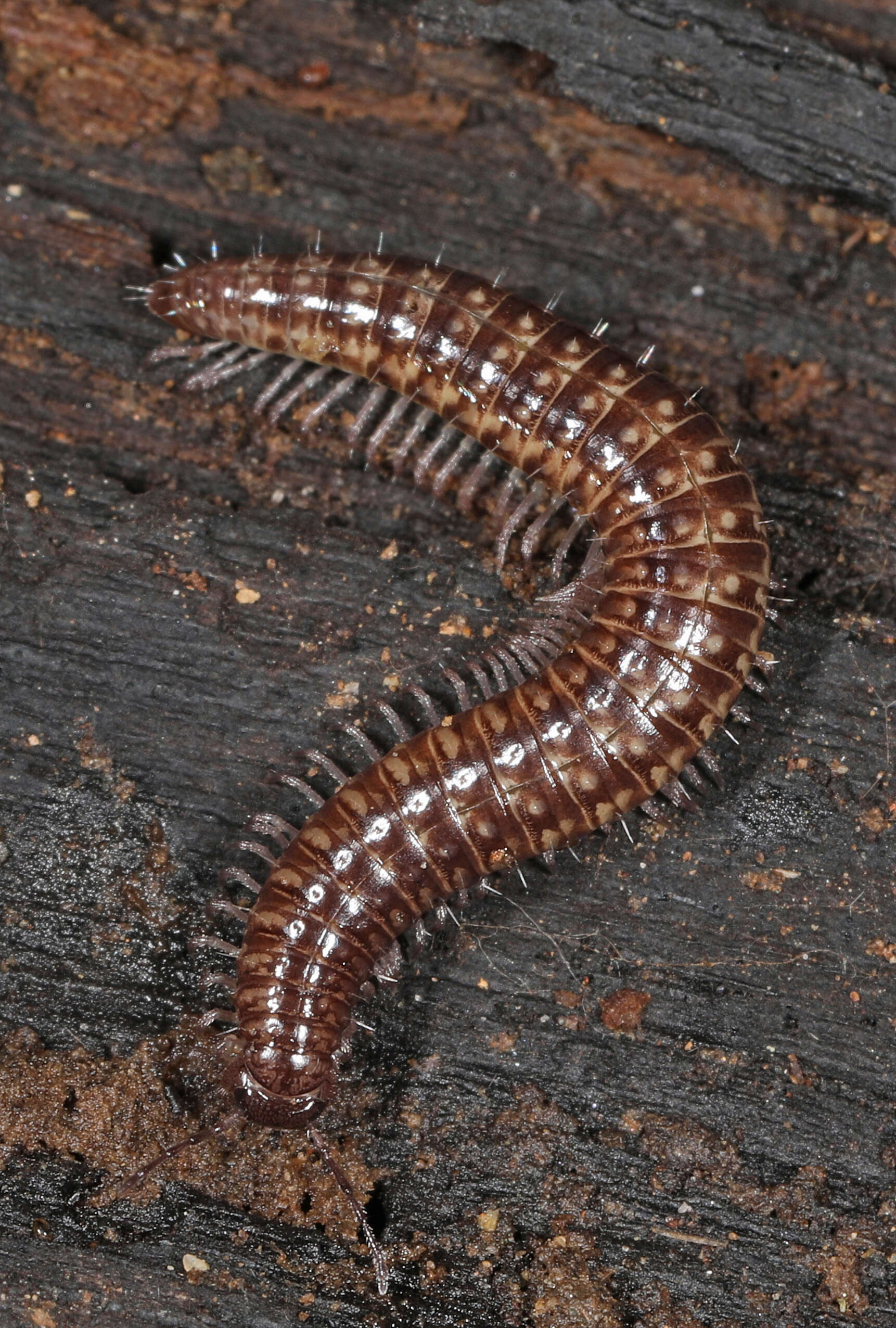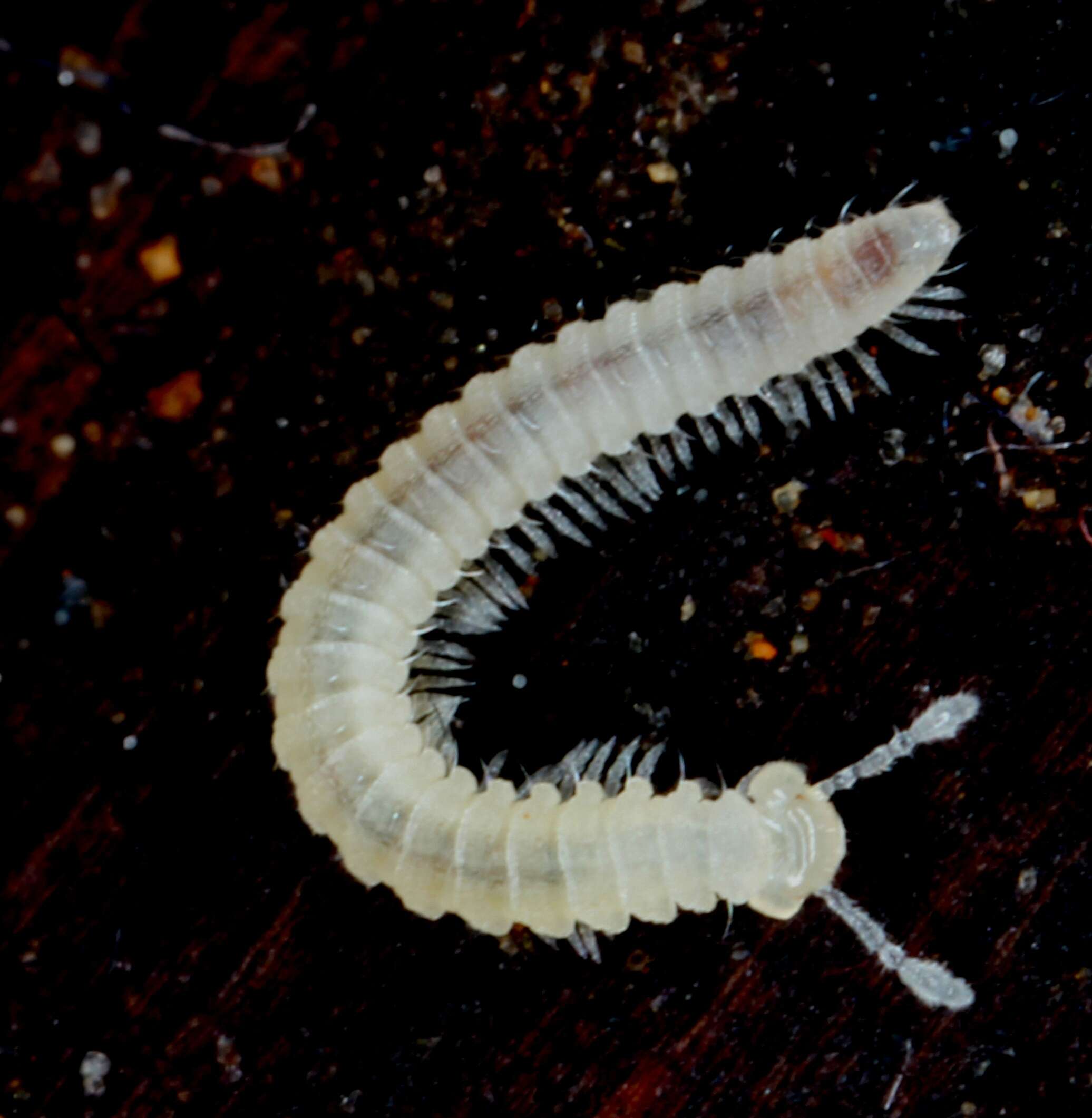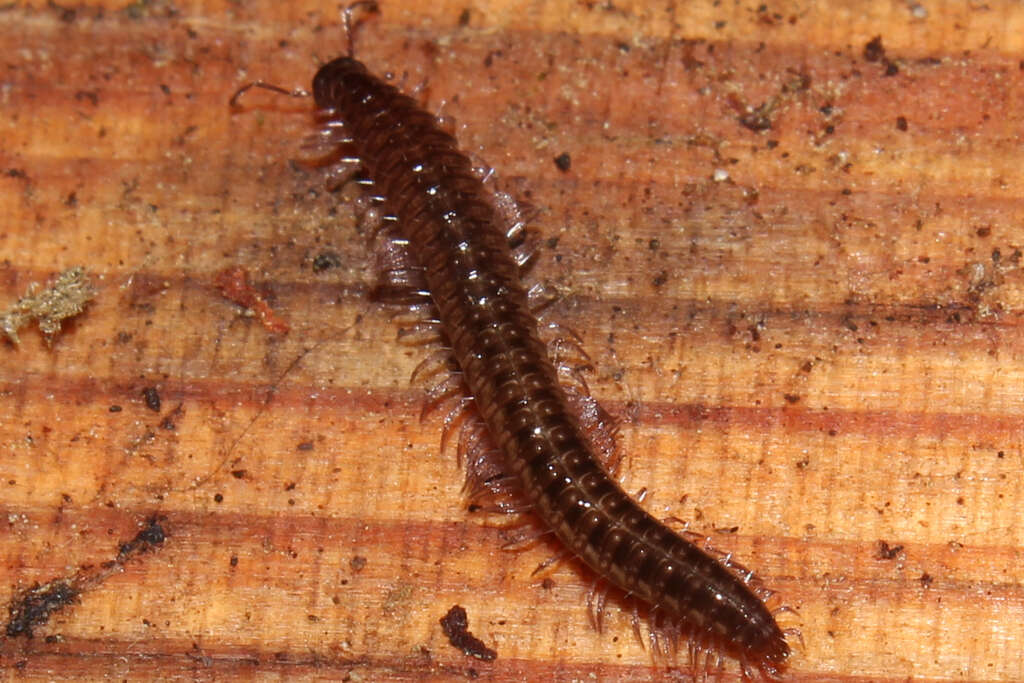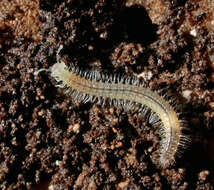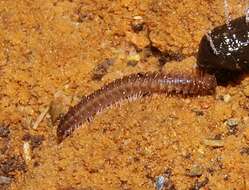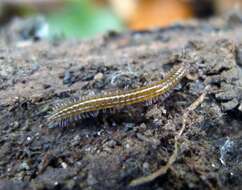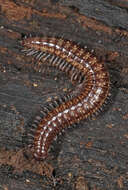Description: English: Plate VII. Fig. 1. Zygonopus whitei Ryder. — Anterior part of the body without the legs; la, front view of the head; 16, male antenna; lc, three segments, enlarged to show the mode of origin of the lateral seta; ; Id, le, origin of the same with the transversely striated area below the flattened boss from which the set;e arise ; If, one of the sixth pair of legs of the male, forming claspers; Ig, a leg of the seventh pair of the male; l/i, a rudimentary leg of the eighth pair (without a claw) ; lfc, rudimentary male genital ar.nature, with a rudimentary claw- less leg on one side : 1/, lm', lamina interior ; lm', a bristly seta, very minute (compare PI. VIIT, fig. li', ml) ; In, male genital armature, lamina exterior (I.e.) ; lo, the latter enlarged (1^, lq, antenna and labrum, etc., of Zygonopus (?) or Trichopetalum). Fig. 2. Trichopetalum 1 una turn Harger.— Head and first three segments; 2a, nearly front view of head; 26, antenna; 2c, two terminal joints still more magnified ; 2d, leg; 2e, a rudimentary leg; 2/, two segments, showing the swollen area bearing three seta}. Fig. 3. Antennae of Pseudotremia cavernarum.— a, one from Little Wyandotte Cave ; 6, from Bradford, and c, from Carter (Bat) caves; 3d, 3c, '.!/, not accurately copied by the artist from the author's camera drawings. FlG 4. Eyes of Pseudotremia cavernarum from different individuals from Bradford Cave. Fig. 5. Scoterpes copei Pack.— A pair of legs. All the figures drawn by the author with the camera lucida. Date: 1888. Source: Packard, A. S. (1888)
The cave fauna of North America, with remarks on the anatomy of the brain and origin of the blind species. Washington, National Academy of Sciences,1888. Author:
Alpheus Spring Packard.

